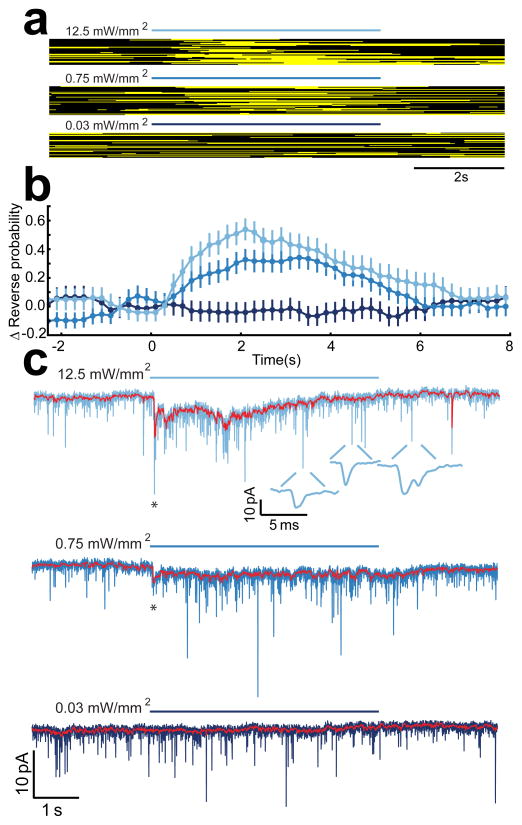Figure 2.
Time course of reversal behavior and the synaptic current in AVA evoked by photostimulation of sra-6 expressing neurons. (a) Raster plots showing the behavioral state of semi-restrained worms in response to photostimulation at three different irradiances. Black and yellow pixels indicate forward and reverse swimming, respectively. Blue bars show the time of the photostimulus at the indicated irradiance. (b) The stimulus evoked change in the probability of reverse swimming for the data shown in a. Error bars are SEM (n > 42 for each stimulus condition). (c) Typical synaptic current in AVA evoked by photostimulation of sra-6 expressing neurons at the three irradiances shown in a. Holding potential was −55 mV. Three phenomenologically distinct components of the response are visible: the onset transient (asterisk), the sustained current (red trace showing median-filtered current), and the increase in the unitary event frequency (insets). Data in a–c are plotted on the same time axis to facilitate comparison of the time course of behavior and synaptic current.

